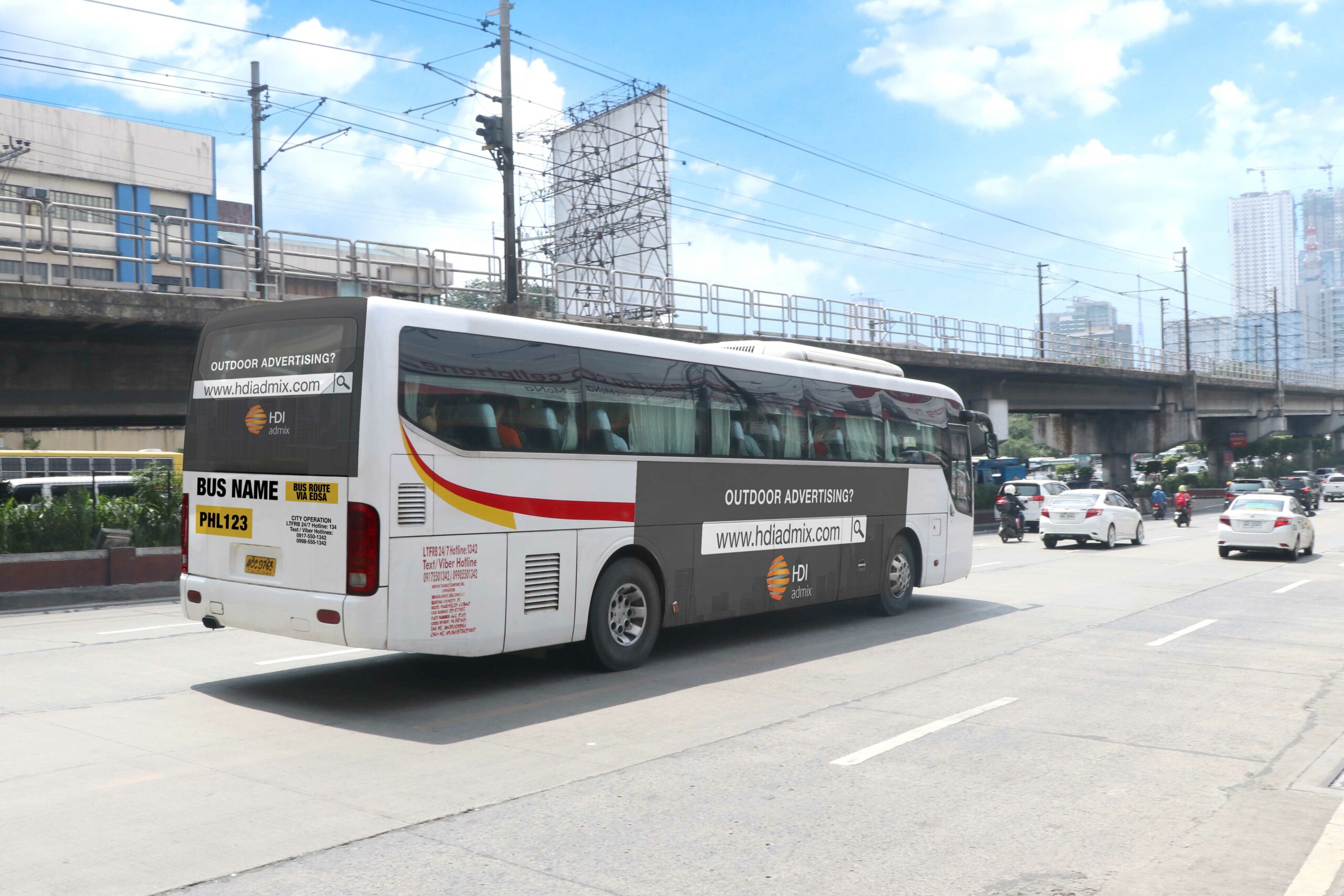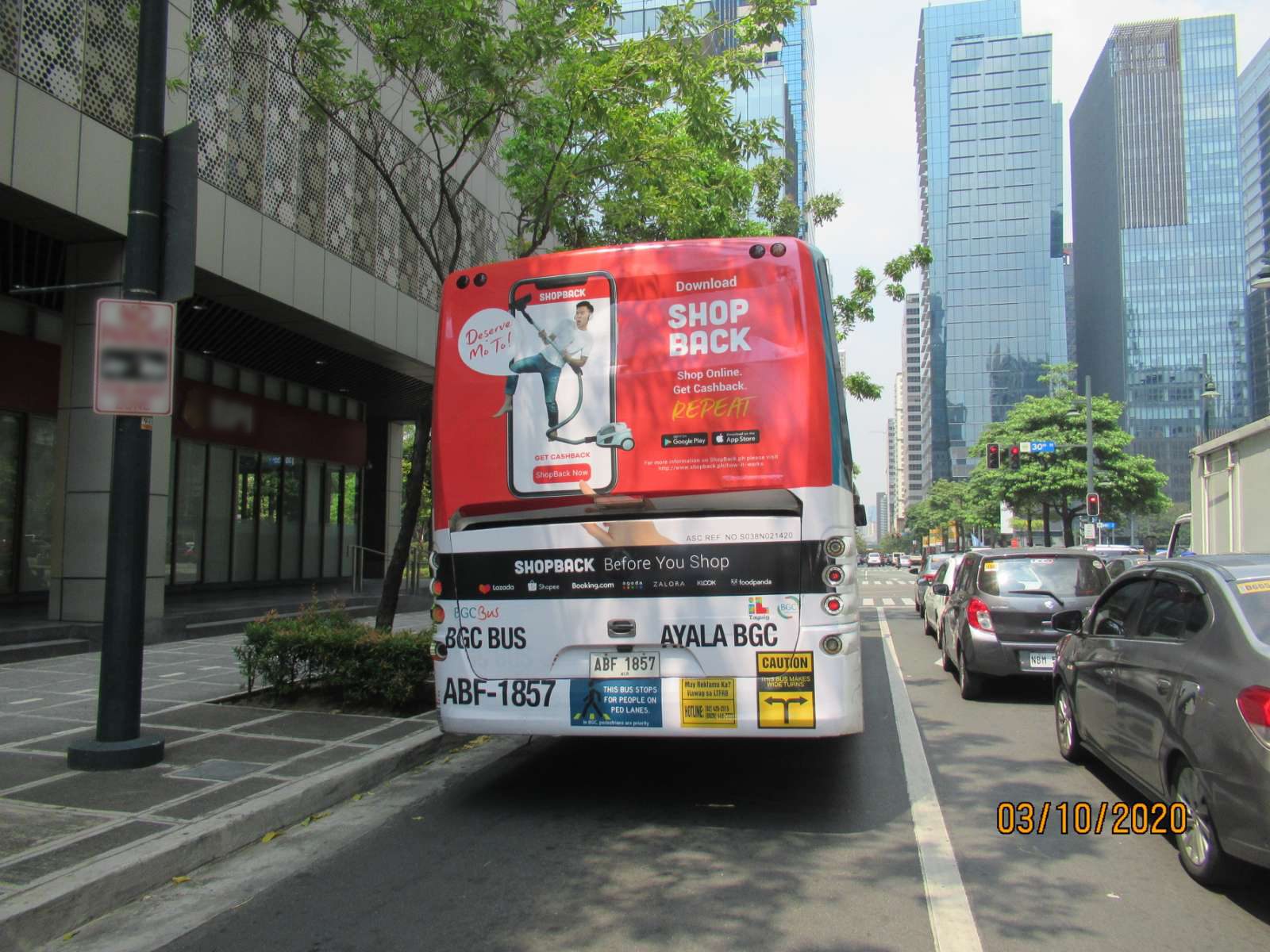Take Full Advantage Of Direct Exposure with Transit Advertising Philippines
Take Full Advantage Of Direct Exposure with Transit Advertising Philippines
Blog Article
Recognizing the Function of Transit Advertising And Marketing in Enhancing Brand Presence and Customer Involvement
Transportation marketing has emerged as a pivotal element in the advertising landscape, using special chances for brands to elevate their exposure and engage customers effectively. With the capacity to reach a varied and captive target market throughout their day-to-day commutes, these advertising methods are not simply concerning visibility; they have to do with creating meaningful connections with prospective customers. As we explore the diverse benefits and ingenious methods within transportation advertising, it ends up being vital to consider how these components jointly affect customer perception and habits, elevating inquiries regarding their long-term effect on brand loyalty.
Interpretation of Transportation Advertising And Marketing
Transit advertising describes the practice of advertising items, solutions, or brands via ads positioned in and around public transport systems. This type of advertising includes a range of positionings, consisting of posters on buses and trains, electronic screens at transportation terminals, and wraps on the outside of lorries. It aims to reach a diverse audience, capitalizing on the high foot website traffic connected with public transportation.
Transit advertising and marketing is strategically placed to capture the attention of travelers, that typically spend substantial time taking a trip or waiting. By incorporating ads right into the daily regimens of people, brand names can create a lasting impact and foster brand name acknowledgment. The tool is especially reliable in metropolitan environments, where public transport is a main mode of traveling.
Additionally, transportation advertising can promote localized targeting, permitting companies to get to particular demographics based upon transit paths and terminal places. As city populations expand and making use of public transportation increases, this advertising and marketing technique has acquired prestige as an important component of incorporated marketing methods. The dynamic nature of transportation marketing, combined with its ability to involve consumers in a restricted environment, highlights its significance in modern advertising techniques.
Benefits of Transit Advertising And Marketing
The efficiency of transportation marketing exists in its capacity to deliver a wide variety of benefits to brand names looking for to boost presence and involvement. Among the main benefits is the considerable reach it provides; transit ads can properly target varied demographics throughout city locations, getting to both commuters and pedestrians alike. This broad exposure considerably increases brand understanding.
One more benefit is the high regularity of impacts. As transportation vehicles travel along well established courses and quit at multiple locations, they produce repeated exposure that strengthens brand name messages. This regularity cultivates familiarity, which is important in customer decision-making.
Transit advertising is likewise cost-effective compared to various other media systems. Provided its extensive reach and possibility for high impressions, brands commonly experience a reduced price per thousand impressions (CPM), maximizing their advertising and marketing spending plan.
Additionally, transit ads can produce a sense of community link. By lining up with local transportation systems, brands can resonate with local target markets and foster a feeling of neighborhood pride. This localized strategy improves brand loyalty and involvement, making transportation marketing a compelling selection for services aiming to solidify their visibility in the market.

Reliable Approaches for Transportation Projects
To make the most of the impact of transit projects, brand names must take advantage of tactical planning and execution customized to their target market. First, identifying the group characteristics of the audience utilizing public transportation is critical. This enables brands to create tailored messaging that reverberates with prospective clients.
Next, picking the right transit mediums is crucial. Whether making use of bus covers, subway posters, or digital displays, each medium has special benefits that can boost presence. As an example, lively visuals on bus covers can stand out, while electronic advertisements can be updated often to mirror timely promotions.
Additionally, incorporating a cohesive branding technique throughout transportation platforms makes sure uniformity and strengthens the brand's identification. Making use of remarkable taglines and eye-catching designs will enhance brand name recall amongst commuters.
By using these methods, brand names can successfully harness the possibility of transportation advertising and marketing, cultivating higher understanding and connection with their target audience. Eventually, a well-executed transit campaign can drive substantial growth in brand visibility and consumer engagement.

Measuring Influence and Involvement
In examining the efficiency of transit ad campaign, accurate dimension of influence and interaction is necessary for brands seeking to maximize their advertising methods. Metrics such as reach, frequency, and impressions give foundational data to analyze exposure. Analyzing these variables assists establish the number of possible customers are subjected to the promotions during their day-to-day commutes.
Interaction can be further assessed through customer communications, such as site web traffic, social networks states, and direct feedbacks to calls-to-action featured in the ads. Utilizing tools like QR codes or special URLs can assist in monitoring of consumer habits straight linked to transportation campaigns. Studies and feedback systems also function as useful approaches to collect qualitative information on consumer assumptions and recall of the ad.
Moreover, progressed analytics and acknowledgment models read more can correlate transit exposure with succeeding investing in behavior, using understandings into the return on financial investment. By using a detailed strategy that combines qualitative and measurable measures, brands can develop a nuanced understanding of their transit marketing effect. Eventually, this data-driven approach enables brands to fine-tune their campaigns, guaranteeing they reverberate effectively with target audiences and enhance total brand name visibility.
Case Studies of Effective Projects
Effective transportation advertising campaigns serve as compelling examples of how effective strategies can elevate brand name presence and interaction. Transit Advertising Philippines. One significant situation is the "I Love New York" project, which changed the city's picture read the full info here and drew in millions of travelers. By utilizing subway advertisements, signboards, and bus covers, the campaign produced a strong, cohesive brand identity, leading to a substantial uptick in tourist and neighborhood organization patronage
Another excellent project is Coca-Cola's "Share a Coke" campaign, which leveraged transportation advertising and marketing to individualize the brand name experience. By including preferred names on marketing products across different transit platforms, Coca-Cola fostered a deeper psychological link with customers, urging them to share their experiences on social media sites.
Additionally, the "Got Milk?" project successfully made use of public transport advertisements to get to a wide target market, enhancing the message of the importance of milk in a balanced diet. The project saw a measurable boost in milk consumption in target demographics.
These instance research studies highlight that when implemented thoughtfully, transportation advertising can significantly boost brand exposure, foster customer interaction, and drive quantifiable results, showing its vital duty in modern advertising strategies. - Transit Advertising Philippines
Final Thought
In conclusion, transit advertising works as a vital tool for boosting brand name visibility and promoting customer engagement. By making use of tactically positioned advertisements within mass transit systems, brand names can efficiently reinforce and reach varied audiences recognition via constant direct exposure. The implementation of targeted messaging and cutting-edge methods even more intensifies the influence of transit projects. Inevitably, the ability to gauge engagement and assess successful study underscores the look at more info efficiency of transit marketing in driving brand loyalty and consumer interactions.
Transportation advertising and marketing has actually arised as an essential aspect in the marketing landscape, providing distinct opportunities for brands to elevate their visibility and involve customers successfully.Additionally, transit advertising and marketing can assist in localized targeting, allowing businesses to get to certain demographics based on transit courses and terminal locations.In evaluating the performance of transit advertising projects, accurate dimension of effect and engagement is essential for brand names seeking to maximize their advertising strategies.Effective transit marketing campaigns serve as compelling examples of just how reliable strategies can boost brand presence and engagement.In verdict, transit advertising and marketing serves as an essential tool for boosting brand exposure and cultivating consumer involvement.
Report this page